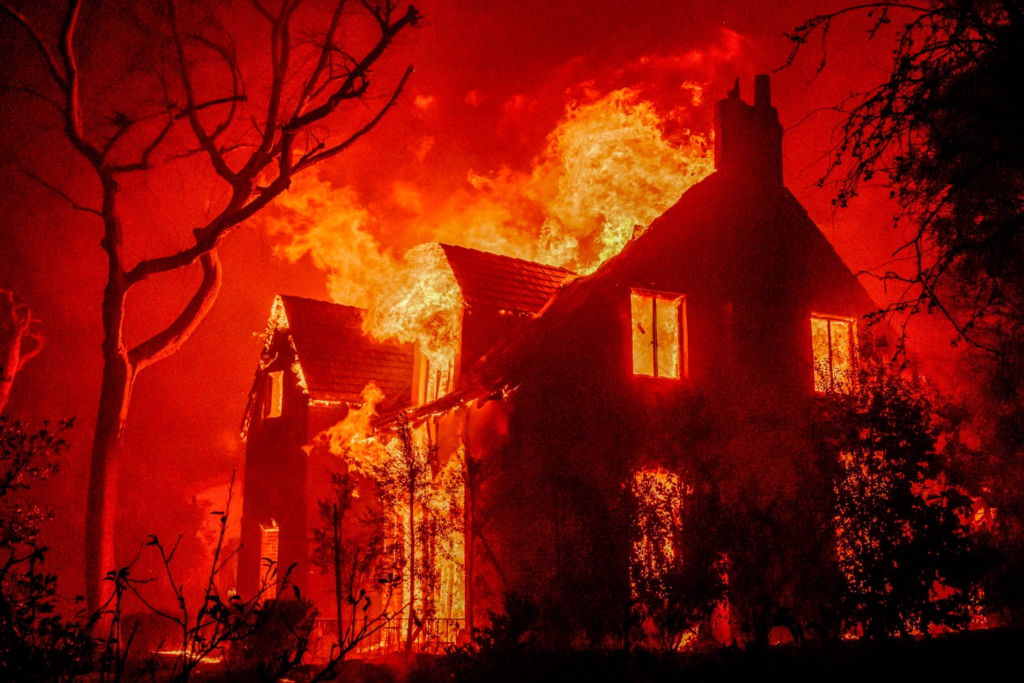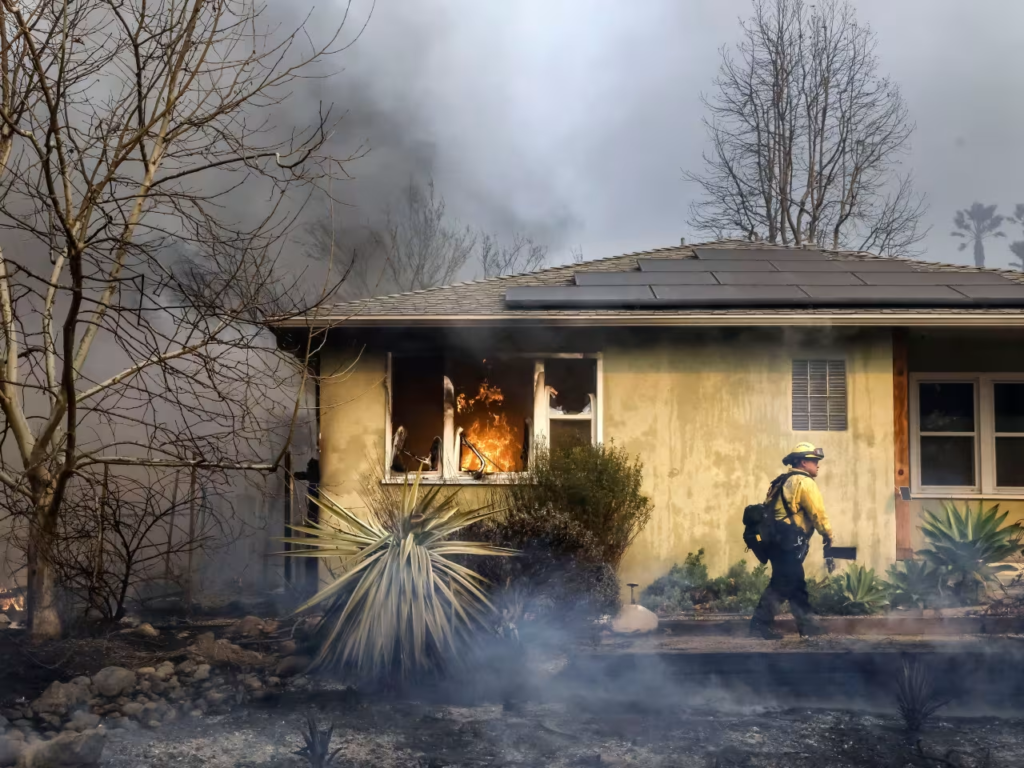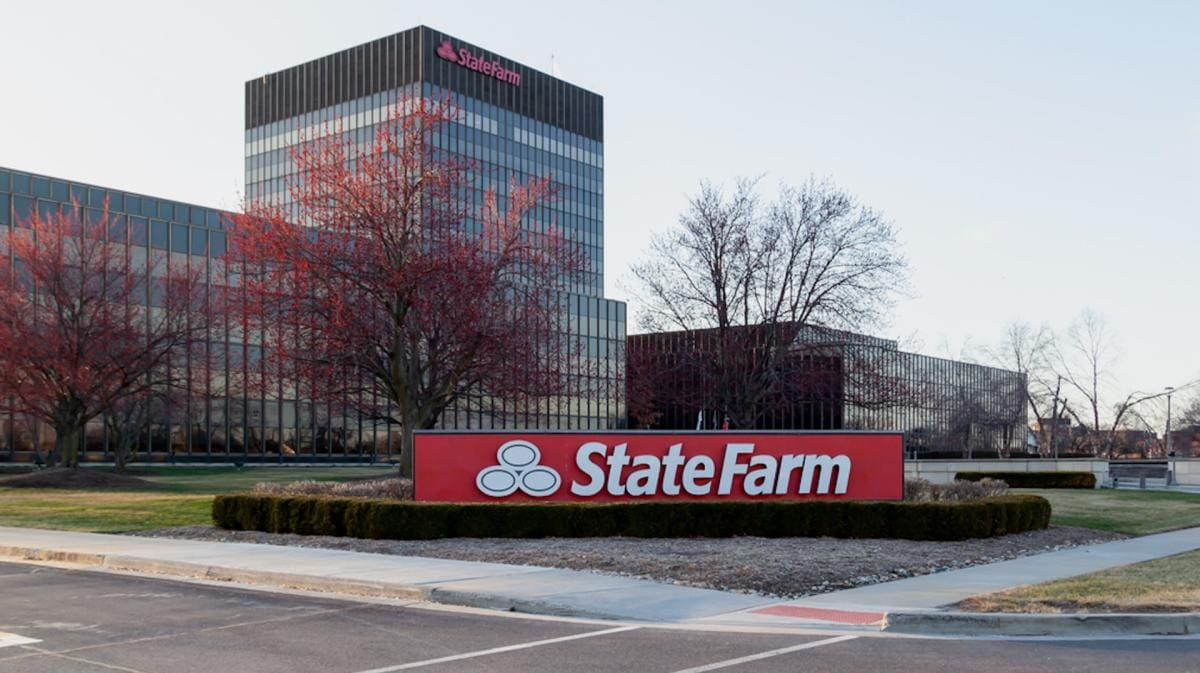One of the most significant developments in this ongoing crisis is the decision by State Farm, one of California’s top insurers, to cancel hundreds of homeowners’ policies in high-risk areas like Pacific Palisades months before the recent wildfires.
California’s wildfire crisis has brought the issue of insurance coverage to the forefront, as residents struggle to recover from devastating losses.
This decision, while legally defensible, has sparked a debate about the role of insurers in mitigating disaster risks and their responsibilities to policyholders.
The Controversial Decision by State Farm
In the summer of 2024, State Farm made the controversial decision to cancel hundreds of homeowners’ policies in Pacific Palisades, an affluent area in Los Angeles now grappling with the aftermath of devastating wildfires.
According to a spokesperson for State Farm, the cancellations were a strategic response to the increasing frequency and severity of wildfires across California. The insurer cited the need to avoid “financial failure” as the primary reason for their decision, given the mounting risks associated with covering properties in high-risk zones.
State Farm’s move came at a time when wildfire risks in California were reaching unprecedented levels. The Golden State has seen a sharp rise in wildfire activity, fueled by prolonged droughts, higher temperatures, and other effects of climate change. These factors have made it increasingly difficult for insurers to balance risk and financial sustainability.
The company’s decision, however, left many homeowners in a precarious position. Without private insurance coverage, residents were forced to turn to California’s FAIR Plan, the state’s insurer of last resort. While the FAIR Plan provides basic coverage for wildfire damage, it often falls short of meeting the comprehensive needs of homeowners in high-risk areas.
California’s Growing Property Insurance Crisis
The cancellations by State Farm are not an isolated incident but part of a broader trend in California’s property insurance market. Over the past several years, private insurers have increasingly withdrawn from high-risk areas, citing unsustainable losses and regulatory challenges.
Read : Watch Video of Wildfire That Forced the Evacuation of an Entire Town of Ruidoso in New Mexico
One of the key factors driving this crisis is California’s strict regulations on premium increases. While these regulations aim to protect consumers from sudden and steep rate hikes, they have also made it difficult for insurers to adjust premiums in response to rising risks. Faced with growing liabilities, many companies have opted to reduce coverage or exit the market altogether.

As a result, the FAIR Plan has seen a dramatic increase in policyholders. Between 2020 and 2024, the number of policies issued by the FAIR Plan more than doubled, reaching 452,000. This surge highlights the growing reliance on this last-resort option, which many experts argue is insufficient to address the scale of the crisis.
The withdrawal of private insurers has also had broader implications for California’s housing market and economy. Homeowners in high-risk areas often face difficulty securing mortgages without adequate insurance coverage, leading to declining property values and financial uncertainty. This has added to the challenges faced by residents, many of whom are already grappling with the emotional and financial toll of wildfires.
Implications for Homeowners and the Need for Reform
The decision by State Farm and other insurers to withdraw from high-risk areas underscores the urgent need for systemic reforms in California’s property insurance market. While insurers are justified in seeking to manage their financial risks, the current situation leaves homeowners vulnerable at a time when they need support the most.
One potential solution is to revisit California’s regulations on premium adjustments. Allowing insurers to set rates that reflect the true cost of covering high-risk properties could help stabilize the market and encourage more companies to offer coverage. However, any changes to premium regulations would need to be balanced with measures to protect consumers from excessive costs.
Another approach is to invest in wildfire prevention and mitigation efforts. By reducing the overall risk of wildfires, California could make it more feasible for insurers to operate in high-risk areas. This could include initiatives such as controlled burns, improved land management practices, and stricter building codes for wildfire-prone regions.
Additionally, the state could explore public-private partnerships to create a more robust safety net for homeowners. For example, a state-backed insurance pool could help spread the risk more evenly across the market, ensuring that no single insurer bears a disproportionate burden.

In the short term, it is essential to provide support to residents affected by the recent wildfires. This includes ensuring that those who lost their private insurance coverage can access the FAIR Plan or other alternatives. It also means holding insurers accountable for their commitments to assist policyholders during emergencies, as emphasized by State Farm in its response to the crisis.
The decision by State Farm to cancel hundreds of homeowners’ policies in Pacific Palisades highlights the challenges and complexities of managing wildfire risks in California. While the company’s actions reflect a broader trend in the insurance market, they have left many residents without adequate protection during one of the state’s worst wildfire seasons.
California’s growing property insurance crisis underscores the need for bold and comprehensive reforms to address the rising risks of wildfires and ensure that all homeowners have access to reliable coverage.
By investing in prevention, revisiting regulatory frameworks, and fostering collaboration between public and private stakeholders, the state can build a more resilient and equitable insurance system.
As the flames subside and the rebuilding process begins, the experiences of those affected by the Pacific Palisades wildfire serve as a stark reminder of the urgent need to adapt to the realities of a changing climate and its impact on communities across California.

